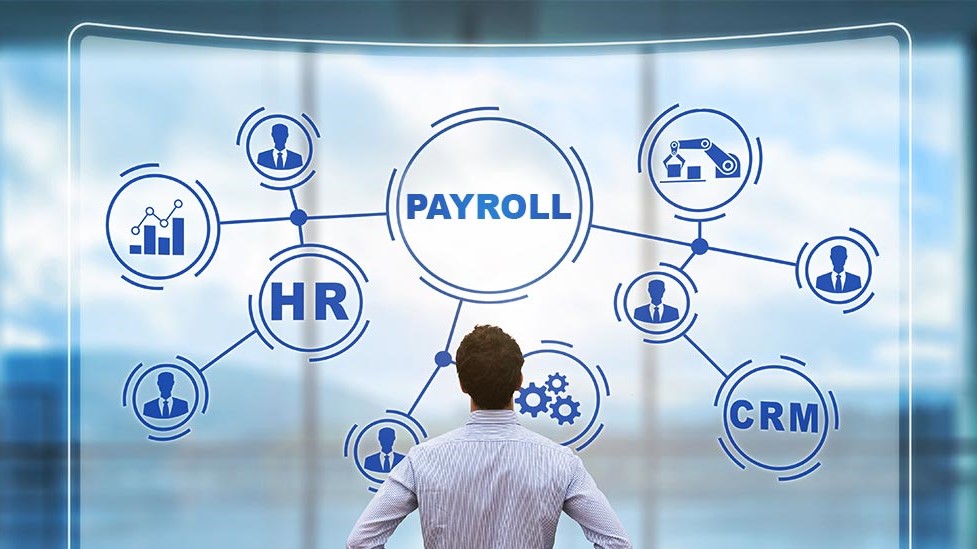
HR & Payroll Solution
The management, upkeep, and automation of employee payments are handled by payroll software, which can be used on-premises or in the cloud. Payroll software that is robust, integrated, and properly configured can lower costs and help organisations of all sizes stay in compliance with tax laws and other financial regulations. In doing so, routine tasks are released from the HR teams’ hands, allowing them to devote more time to planning, budgeting, and other business-oriented projects.
How does payroll software work?
In order to guarantee that employees receive accurate, timely compensation in the proper manner, payroll software integrates with other core business systems (such as direct deposit, check, or payment card). The software is typically accessible by employees, who can update their personal data, payment preferences, and other specifics.
In order to manage and automate payments to workers of all types (including salaried and hourly employees, temporary and gig workers, and others), at various locations around the world, payroll systems for employers must be dependable, simple to configure, and flexible enough. Tasks should be made simpler by payroll systems so that employees can manage complicated rules, payroll flows, and checklists with ease and continue to adhere to tax laws and other financial regulations.
Why do organizations use payroll software?
Millions of organizations worldwide rely on payroll software to streamline and manage employee compensation and ensure
- Accuracy and punctuality. Payments to employees can be difficult and time-consuming, particularly with mergers and acquisitions, new hires, and changing regulations. Employers can use payroll software to ensure that employees are paid accurately and on time each and every time, fostering employee confidence and trust.
- Transparency. Personnel costs are typically an organization’s highest expense. The integration of payroll software with other business functions like accounting and finance enables organisations to stay within their budgets, produce reports on time, and make long-term plans.
- Flexibility to adapt and scale. Payroll software makes it simple to adapt when business needs change. For instance, the software automatically implements new rules when a new office location with different taxes and regulations opens, saving time on entering employee data.
- More time for high-level tasks. Payroll software can save businesses hours each month when compared to manual and antiquated alternatives, time that can then be used for other crucial business initiatives.
How does payroll software help businesses?
The benefits of implementing an efficient, compliant, and configurable payroll software solution go beyond the tactical tasks of paying employees. It also helps organizations
- Improve morale. Avoid situations where employees are paid incorrectly, are paid late, are not paid for overtime or other work, or are not paid in the manner they prefer.
- Tighten security. Payroll systems aid in ensuring that only the appropriate individuals have access to data that is relevant to their roles. It is crucial for businesses to have software in place that prevents double payments, verifies that every payment is accurate, and automatically determines the right benefits and tax payments for each employee, especially now that many employees and gig workers work from home.
- Deepen business insights. Organizations gain deep insights from the integration of payroll systems with other core business systems that can be used to create forecasts and budgets that are more precise. Organizations can, for example, quickly determine the personnel costs in real time for each department and the revenue generated at those costs over various time periods.
- Improve reporting. Using real-time data from automated payroll software, executives can quickly create charts and graphs that will help them make important business decisions.
How does payroll software help employees?
Payroll software benefits companies in more ways than one. Additionally, it benefits workers. It ensures that employees are paid accurately, promptly, and using the preferred payment method with the least amount of hassle.
Employees can view their payment history and easily modify their personal information and payment preferences by using user-friendly interfaces. If they have questions, they can quickly receive responses, minimising disruptions to their work.
What’s the future of payroll software
Payroll systems should become more flexible in the coming years to accommodate the expanding diversity of job roles and compensation schemes. Numerous wage earners and gig workers, many of whom will work remotely, will increasingly join the nine to five salaried workforce.
In order to provide compensation in a variety of ways, such as by project, contract length, and different pay periods, having flexible payroll systems will be essential (weekly, semimonthly, monthly). Workflows will be streamlined and automation will be improved with the help of business intelligence and AI.
Organizations of all sizes will continue to face security challenges. As more people work remotely, rules-based validation and roles-based data access will become increasingly important.

